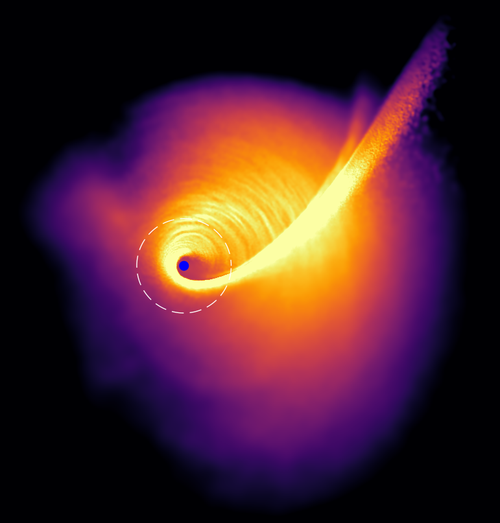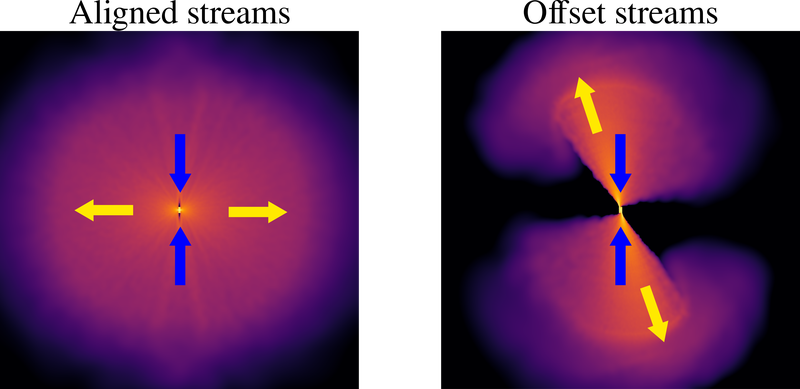Stellar tidal disruption events
Nuclear transients, luminous events occurring in central regions of galaxies including stellar tidal disruption events, provide a unique and promising way of characterizing properties of supermassive black holes.
Supermassive black holes (SMBHs) reside in galactic centers and are strongly related to the evolution of their host galaxies, while their exact formation and growth mechanisms remain among the most important unsolved questions in astrophysics. Despite their widespread presence, the properties of most SMBHs (i.e. their mass and spin) are not well known, due to most of them lacking a significant amount of gas in their proximity and being in a quiescent state, and therefore challenging to study.
Stellar tidal disruption events (TDEs) are nuclear transients, lasting over several months up to a few years, that occur when a star is scattered in close proximity to a supermassive black hole. Due to the intense tidal gravitational field of the SMBH, the star is disrupted, forming an elongated stream of debris. When the leading part of the stream returns to the vicinity of the SMBH, it apsidally precesses and collides with the in-falling part of the stream. This leads to a self-crossing shock that launches an outflow from the self-crossing region, part of which later circularizes in an accretion disc. TDEs generate a significant amount of radiation, which can even outshine their host galaxies.
TDEs are of special interest due to the possibility of learning more about the masses and spins of SMBHs as well as probing the physics of extremely strong gravitational fields. Additionally, they can provide insight into the accretion physics of the gas around SMBHs, and stellar dynamics in galactic centers. They also play an important role in multi-messenger astronomy since there are several studies identifying TDEs that coincide with high-energy neutrinos. Additionally, TDEs are potential sources of gravitational waves.
The current number of detected TDEs (≈ 60) is expected to increase to more than 1,000 new sources per year mostly due to the Legacy Survey of Space and Time (LSST) survey conducted with the Vera Rubin Observatory. To prepare for this large wave of data, accurate TDE models are essential for the characterization of observed lightcurves and constraining the SMBH’s properties.
Observations of stellar tidal disruption events
CAC has an in-kind contribution arrangement with the LSST collaboration, providing access to preparatory LSST data, which includes simulated observing strategies and catalogs. As LSST will become operational in 2025, data access will enable timely comparisons of observations with simulation results. Additionally, CAC is a part of the ongoing ePESSTO+ collaboration, the largest program focused on the spectroscopic classification of transients, offering an opportunity to characterize potentially observable spectroscopic features.
Simulations of stellar tidal disruption events
At the UNG we are performing hydrodynamics simulations of TDEs. We are focusing on various stages in TDEs, including the debris fallback, stream self-crossing, and accretion disc formation. We aim to gain fundamental insights into the nature of TDEs, contributing to advancements in theoretical knowledge, especially within black hole and transient astrophysics. Our work provides additional constraints on the emission signatures, which can be used by observers to extract SMBH parameters from current and future TDE observational data, setting a foundation for further studies in these fields.



